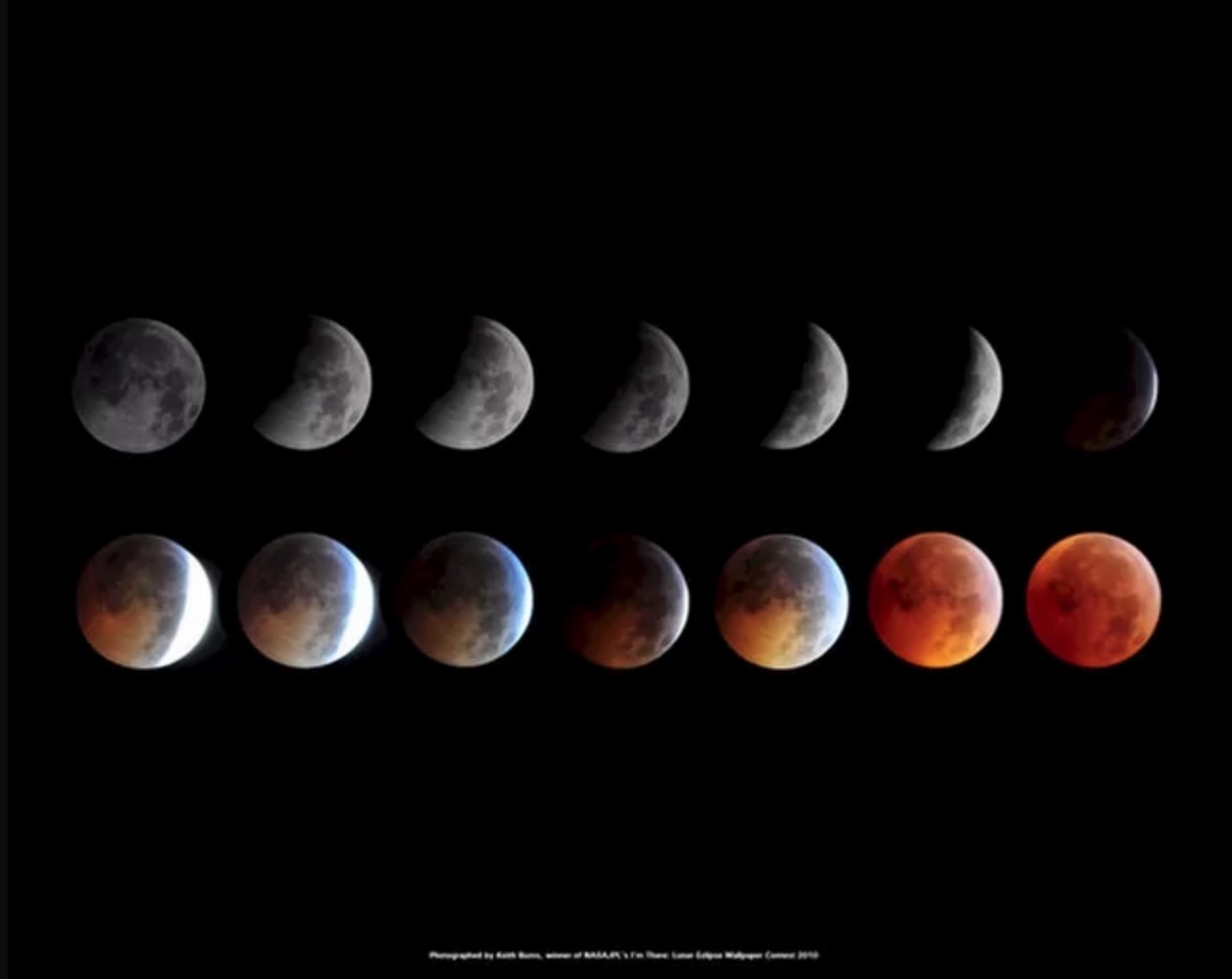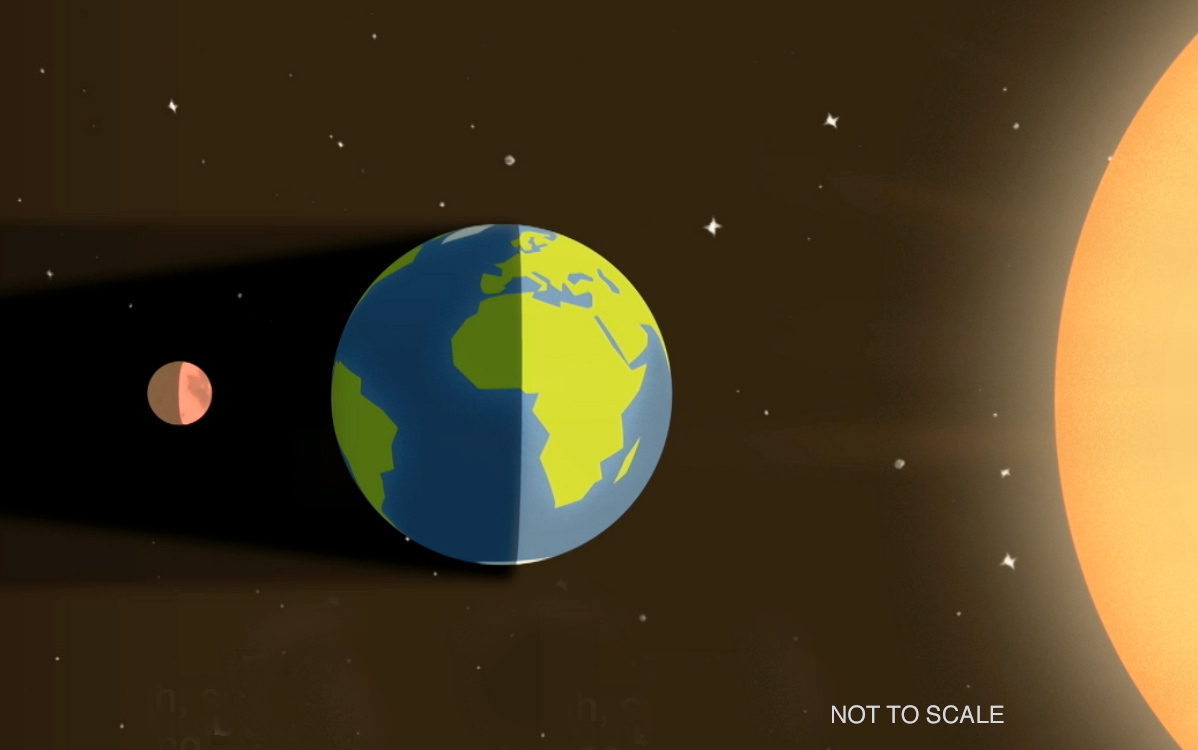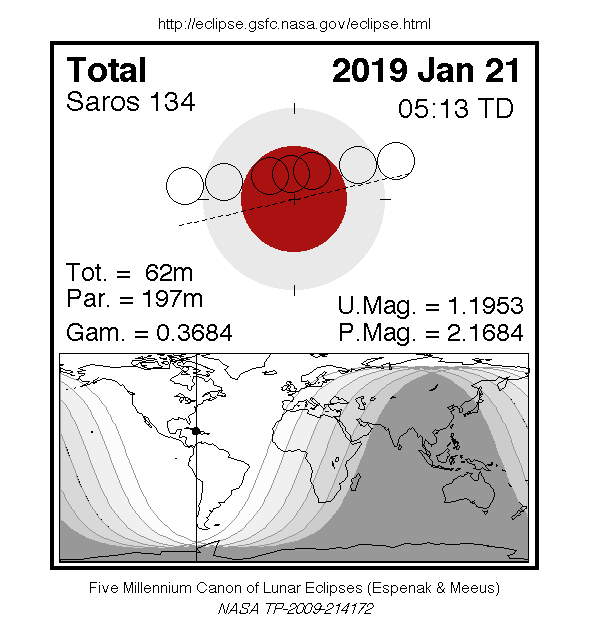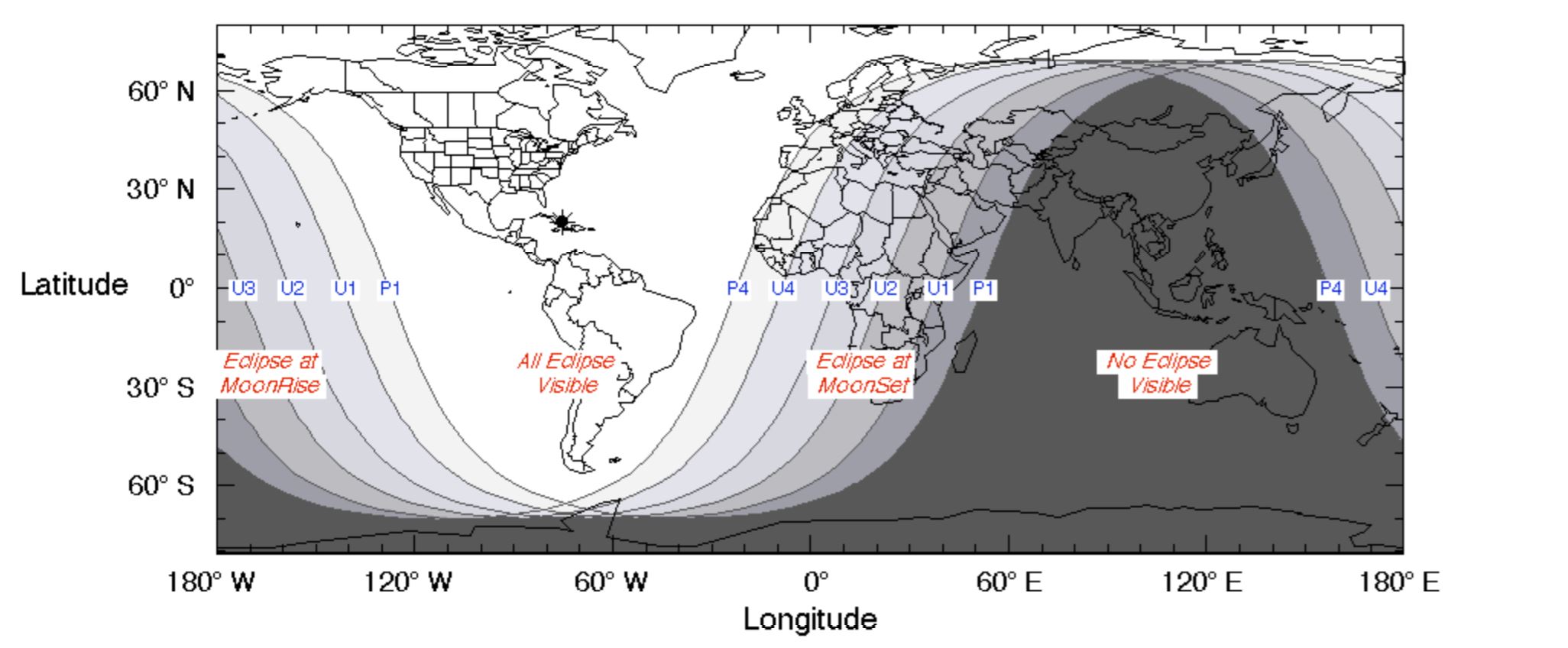Super Blood Wolf Moon Eclipse of 2019: Complete Guide
Update for 3 a.m. EST, Jan. 21: The total lunar eclipse of 2019 has ended. See our full story here! See more photos here!
Overnight from Sunday, Jan. 20, 2019, into Monday, Jan. 21, millions of people in North and South America will have a prime view of a total lunar eclipse. During a special nocturnal hour, the full moon will become fully tinted with the red-orange color of sunset.
Eclipse Photos | Next Lunar Eclipse | Famous Eclipses | For Kids! |
The Jan. 21 total lunar eclipse will be the last one until May 2021, and the last one visible from the United States until 2022; the most recent total lunar eclipse previous to this one appeared in July 2018. Here, learn more about what makes lunar eclipses so special.
Editor's note: If you capture an amazing photo or video of the Jan. 21 total lunar eclipse and would like to share it with Space.com for a story or gallery, send images and comments to: spacephotos@space.com.
Resources, Tips and Multimedia
Don't Miss the Super Blood Wolf Moon Eclipse! It's the Last Until 2021.
Skywatchers in North America will get a celestial treat late Sunday (Jan. 20) and early Monday (Jan. 21), when the moon goes into eclipse and turns blood-red.
Breaking space news, the latest updates on rocket launches, skywatching events and more!
Super Blood Wolf Moon Webcasts! How to Watch the 2019 Total Lunar Eclipse Online
Catch the January 2019 total lunar eclipse on your digital devices if weather or circumstances prevent direct viewing of the marvelous celestial event.
Here's the Weather Forecast for the Super Blood Wolf Moon of 2019 Tonight!
The National Weather Forecast for the lunar eclipse tonight (Jan. 20) is basically a coin toss.
Super Blood Wolf Moon of 2019! Visibility Maps for the Total Lunar Eclipse
See visibility maps for the Super Blood Wolf Moon eclipse of 2019 here!
Teach Your Kids About the Total Lunar Eclipse with These NASA Resources!
NASA published moon-observation worksheets to teach kids about the science of total lunar eclipses.
Use Mobile Astronomy Apps to Plan Your Lunar Eclipse Party!
Sunday night, Jan. 20, will bring the first celestial spectacle of 2019 for skywatchers all across the Americas: a total eclipse of the moon.
Total Lunar Eclipse
During a lunar eclipse, a full moon's bright facade will change. As the moon enters Earth's shadow, all of the moon (or a section of it in the case of a partial eclipse) will turn a rusty color. Sunlight scatters to produce the red colors of sunset and sunrise when it enters Earth's atmosphere at a particular angle.
What a lunar eclipse displays is the color of all of Earth's sunrises and sunsets reaching the moon, NASA scientist Noah Petro told Space.com. If someone stood on the moon during a total lunar eclipse, Earth would appear to have a reddish ring all around it, as the person would gaze at the 360-degree sunrise and sunset they'd perceive at that particular intersection of Earth and lunar orbits.
When the lunar eclipse begins, the bright moon dims as it enters the outer part of Earth's shadow, called the penumbra. The deep tint of a full lunar eclipse is visible once the moon enters the deepest part of Earth's shadow, or umbra. The bright-red color appears once the moon is fully engulfed in the shadows, and it's the reason "blood" moon is a popular moniker for lunar eclipses.
To a certain extent, lunar eclipses reveal something about Earth, too. "Lunar eclipses ... reflect our world," astronomer and podcaster Pamela Gay told Space.com in an email. "A blood colored moon is created [by] ash from fires and volcanoes, ... dust storms and pollution all filtering sunlight as it scatters around our world. A grey eclipse is clear skies.
"Our world can change the appearance of another world, and during an eclipse, the universe lets us see this color play," she said.
The Jan. 20-21, 2019 total lunar eclipse will last 1 hour and 2 minutes, according to NASA's Goddard Space Flight Center lunar eclipse projections.
The full experience, from the start of the partial eclipse to the end, will last 3 hours and 17 minutes.
The peak of the total lunar eclipse will happen shortly after day's end on Sunday, Jan. 20, on the U.S. east coast, at 12:16 a.m. EST (0516 GMT) on Monday, Jan. 21. This peak is also known as the "greatest eclipse" and is defined as the moment when the moon comes closest to the axis of Earth's shadow.
Below is a lunar eclipse timetable for several locations from which the celestial event is visible, based on information from timeanddate.com.
People in Hawaii and eastern Africa will catch the dramatic lunar eclipse as the moon rises and sets over the horizon, respectively. Those viewers will see a total eclipse, but not all of the partial eclipse that leads up to and ends the celestial event. All of North and South America, including the Caribbean nations, will see the entire event. People in countries in Europe such as Iceland, Ireland and Portugal will also get to view all of the eclipse. And although people in the Ukraine and Turkey won't catch the whole eclipse, they'll still wake up to an impressive lunar sight. [Total Lunar Eclipse Gets a Cloudy Halo in Cool Time-Lapse Video]
| Anchorage, Alaska | 6:33 p.m AKST | 7:41 p.m. AST | 8:43 p.m. AST | 9:50 p.m. AST |
| Los Angeles, California | 7:33 p.m. PST | 8:41 p.m. PST | 9:43 p.m. PST | 10:50 p.m. PST |
| Mexico City, Mexico | 9:33 p.m. CST | 10:41 p.m. CST | 11:43 p.m. CST | 12:50 a.m. CST |
| Miami, Florida | 10:33 p.m. EST | 11:41 p.m. EST | 12:43 a.m. EST | 1:50 a.m. EST |
| Santo Domingo, Dominican Republic | 11:33 p.m. AST | 12:41 a.m. AST | 1:43 a.m. AST | 2:50 a.m. AST |
| Nuuk, Greenland | 12:33 a.m. WGT | 1:41 a.m. WGT | 2:43 a.m. WGT | 3:50 a.m. WGT |
| Rio de Janeiro, Brazil | 1:33 a.m. BRST | 2:41 a.m. BRST | 3:43 a.m. BRST | 4:50 a.m. BRST |
| Reykjavik, Iceland | 3:33 a.m. GMT | 4:41 a.m. GMT | 5:43 a.m. GMT | 6:50 p.m. GMT |
| Lagos, Nigeria | 4:33 a.m. WAT | 5:41 a.m. WAT | 6:43 a.m. WAT | Moon is below horizon |
Lunar Phases and Eclipses
A new moon occurs roughly every month, when the moon's far side is facing the sun and the moon's near side is in darkness. Every time a viewer sees the moon, it's always the same face, because the moon is tidally locked with Earth. So, when the moon is between the sun and Earth, a viewer doesn't see the near side; it cannot be seen in the sky. New moons are the phases that produce the other major celestial-shadow event: solar eclipses.
A lunar eclipse occurs during the full-moon phase, the opposite phase to new moon. During lunar eclipses Earth sits in the middle, between the sun and the moon. That's how the moon is able to pass through the planet's shadow.
Recent and Upcoming Total Lunar Eclipses
The last total lunar eclipse occurred on July 27, 2018, and was visible over Africa and countries in Central Asia such as India. Several months prior, on Jan. 31, another total lunar eclipse could be seen from Central Asia, the Pacific region and Alaska.
The first total lunar eclipse to follow Jan. 21's event will occur on May 26, 2021, and will be visible over the Pacific Ocean, with viewing possibilities in North America, South America and east Asia.
Follow Doris Elin Salazar on Twitter@salazar_elin. Follow us @Spacedotcom, Facebook and Google+. Original article on Space.com.

Doris is a science journalist and Space.com contributor. She received a B.A. in Sociology and Communications at Fordham University in New York City. Her first work was published in collaboration with London Mining Network, where her love of science writing was born. Her passion for astronomy started as a kid when she helped her sister build a model solar system in the Bronx. She got her first shot at astronomy writing as a Space.com editorial intern and continues to write about all things cosmic for the website. Doris has also written about microscopic plant life for Scientific American’s website and about whale calls for their print magazine. She has also written about ancient humans for Inverse, with stories ranging from how to recreate Pompeii’s cuisine to how to map the Polynesian expansion through genomics. She currently shares her home with two rabbits. Follow her on twitter at @salazar_elin.




